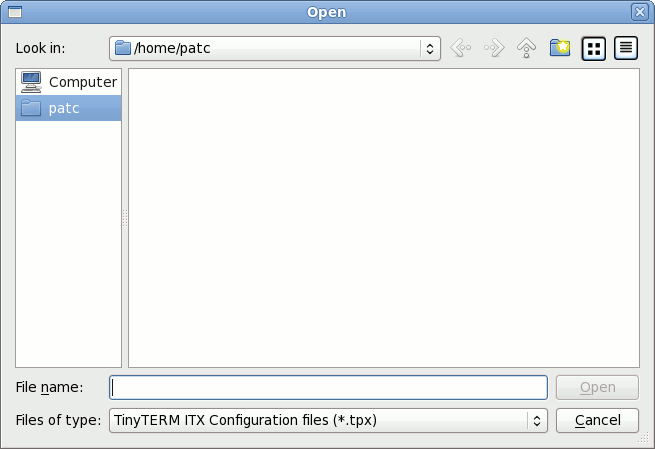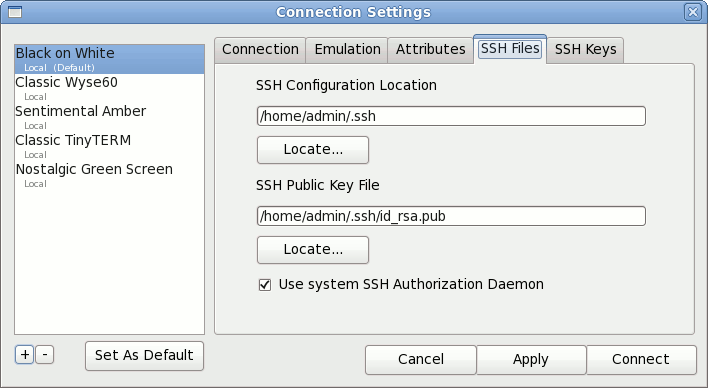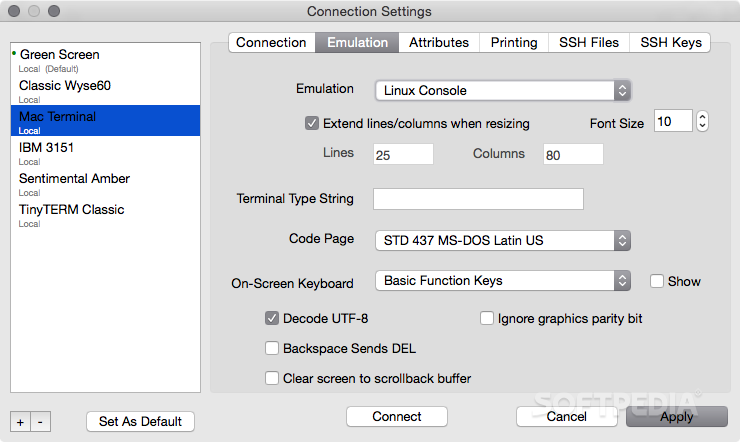
- TINYTERM REFLECTION SERIAL
- TINYTERM REFLECTION SOFTWARE
- TINYTERM REFLECTION CODE
- TINYTERM REFLECTION PC
- TINYTERM REFLECTION WINDOWS
TINYTERM REFLECTION SOFTWARE
TinyTERM Plus Edition can be installed on a per client basis, or you can place the software on your intranet and users can download the software as needed. You can provide just one user with access to your host or provide host access to your entire company. With TinyTERM Plus Edition, you can customize access depending on your company's needs. Provide Scalable, Customized Client Access
TINYTERM REFLECTION PC
TinyTERM Plus Edition also provides your desktop PC users with powerful networking utilities, including printer sharing, transparent printing, file sharing, and drag-and-drop file copying. Provide secure client-based access to your UNIX/Linux and IBM hosts over your company intranet.
TINYTERM REFLECTION WINDOWS
(Client-to-Host Solution for Windows clients accessing UNIX/Linux and IBM host applications and data.) Stdin is not redirected, so it takes input from the original terminal device, eventually mapping back to my keyboard.« Previous | Order this Product On-line 3rd Party Product: TinyTERM Plus Edition Putting it all together we have the tinyterm command, which runs its arguments as a subprocess, sending the child’s stdout and stderr to the LCD. The lcdWriter‘s Write method has a little bit of smarts to deal with making the LCD look like a 16 x 4 terminal, rather than a linear stream of characters, handles scrolling the screen, and obscures the odd addressing scheme of the video memory inside the HD44780. Using an lcdWriter type (more on that in the next slide), Tinyterm spawns a child process and redirects Stdout and Stderr to the LCD. So, could I connect a UNIX process’s output to the LCD screen transparently ?Įnter Tinyterm, a simple Go program that does just that.

In Go, that is basically an io.Writer, right ?.UNIX processes talk to each other over file descriptors.Each I 2 C device is a file descriptor, once opened and programmed by ioctl.I 2C buses are visible in userspace as files.Looking back through this project it occurred to me that the recurring theme was, in the best UNIX tradition, everything is a file. Here is an exampleīut this was kind of boring, could I do something more interesting ? So now I can drive the output of the LCD with Go.
TINYTERM REFLECTION CODE
I adapted some Python code to work with my Go I2C type which gave me a set of LCD primitives to work with. To interface between the HD44780 I’m using a cheap PCF8574 I 2C IO expander which takes any byte received over I 2C and maps it directly to its output pins. The LCD I was using is based on the Hitachi HD44780 standard which has a baroque protocol using many pins and is completely incompatible with I 2C. Driving an I 2C device from userspace in Go is pretty straight forward open the device, then use an ioctl to tell the kernel to bind the file descriptor to a remote I 2C device. Now the hardware was done, it was time to write some code. The next step was to connect up a real I 2C device to the bus and see if I could detect it with i2cdetect.Īlthough both the LCD and the laptop are 5 volt devices I wasn’t sure how much current the laptop could source on pin 9, so I opted to buffer the devices using a Freetronics level shifter which effectively isolates the laptop from the high current LED backlight on the LCD panel. I 2C adapter talking to an I 2C IO expander Importantly, I 2C is also used as the protocol to detect an external monitor, where it goes under the name DDC2b.


If you’ve used the lmsensors package in Linux, or have heard of SMBus, this is basically a variant of I 2C.
TINYTERM REFLECTION SERIAL
It’s has been used inside every PC and laptop for decades as a slow speed serial protocol for interfacing with simple devices like temperature sensors. I 2C isn’t just used on microcontrollers like the Arduino. If you’re patient you can bit bang the protocol using a few resistors and tack switches. The I 2C bus is a low speed two wire serial bus mainly used for connecting sensors and microcontrollers together.īut, you don’t even need a microcontroller to use I 2C. The first piece of the puzzle is the I 2C bus. There are several parts to this presentation. It was inspired by a recent post on Hack-a-Day. This talk is about a experiment to see if I could drive I 2C devices from Go through my laptop’s VGA port. You can find the original slides online at. This post is about Tinyterm, a silly hack that I presented as a lightning talk at last month’s Sydney Go User group 1.


 0 kommentar(er)
0 kommentar(er)
